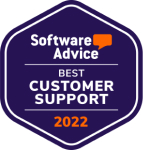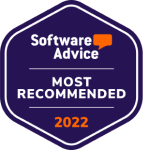Making sales on the internet means building an eCommerce website. But figuring out how to start an online store is just the beginning. To succeed, you'll want to spend time researching products and figuring out precisely what sort of niche you want to target.
Let's look at how to make an online store work, with a step-by-step process to get you started. Here is an example of top ecommerce website templates you can check.
How to Build an eCommerce Website - A Step-by-Step Guide
While it might seem an immense mountain to climb, building an eCommerce website isn't insurmountable. The key to success is to break the task down into bite-sized chunks that you can handle. Set small goals along the way to show yourself that you can make progress.
- Clearly define your goals
- Identify your target audience and find your niche
- Write a business plan and devise a clear strategy
- Choose a product
- Research and create your product line
- Set up your business
- Creating an eCommerce website with Pixpa
- Understand the Power of SEO
- Identify Your Sales Channels
- Test and Publish Your Online Store
- Go Live With Your Store
- Market Your eCommerce website
Step 1 - Clearly Define Your Goals
As with any significant endeavor, start by defining your goals. What is it you want your business to do? Sure, you want it to make money, but how? What can you sell?
There are two ways to approach this very initial stage of the process. First, many people have a business idea to sell a product. For example, they have a new style of shoes, an online education course, or prints of their photography, and they want to sell them. The product is there, so the exercise is to make the website and connect customers with the product. Do check out our step-by-step guide on how to design a website.
The other way to go about creating an online store may seem a little backward - but lots of people do it. Instead of starting with a product you want to sell, you start an eCommerce website to sell something that you don't even know what is yet. People are buying stuff all the time, you just have to research to find something that sells!
Step 2 - Identify Your Target Audience and Find Your Niche
Whether you are bringing your product or finding it along the way, successful websites all share a few common elements. The best ones are clearly targeted. They know who they are selling to and what those people want to see. Have a look at some of the best eCommerce websites built with Pixpa, for some inspiration.

Check out Arteri.es
Create your online store and start selling like a pro. Pixpa's e-commerce store builder gives you everything you need to sell online, seamlessly integrated with your website. To get started check out the range of professionally designed eCommerce website templates. All Pixpa eCommerce website templates are mobile-friendly and fully customizable to fit your style and requirements.

Theme: Ratio
You must also read our guide on how to create a successful small business website with examples of small business websites created with Pixpa, to inspire you to create yours.
Online sales are all about targeting. By knowing exactly who your most likely customers are, you can make your marketing efforts effective. The internet is simply too huge to try the shotgun approach. This isn't a brick-and-mortar store that you can hope to make sales based solely on your location - there are no passers-by to lure in. Online, you've got to know who your most likely customers are and find them.
How do you do that? Primarily by targeting your advertising efforts. Maybe it's by using good SEO to seek out people who are searching for something relevant. Or maybe you want your ads to appear on their social media feeds. However you decide to do it, you've got to have a crystal-clear idea of who they are and what they're looking for. Do read our SEO guide for photographers and creators, to get a clear understanding of how to implement an SEO strategy for your website.
Step 3 - Write a Business Plan and Devise a Clear Strategy
By now, your store is beginning to take shape. You have an idea of what your customers look like and how to find them. You're planning your website to target them with a clearly defined niche. It's time to start writing things down and making it official.
A business plan is made up of many parts, so it's best to get started writing it early. Traditional business plans are the basis of securing funding and talking with partners and investors. You might not need any of those things online, so do you actually need a business plan written out?
The answer is yes--you do need a business plan. A business plan is the foundational document of your business. While it's helpful in working with other stakeholders, its primary purpose is to keep you on task. By writing down all the steps, it helps you define a clear strategy. In addition, it provides you with an outline of your goals and mission. In other words, it keeps your head in the game and prevents distractions.
Here's a look at the significant parts of a typical business plan. You don't need to fill it all out right now--some of the following steps will answer more of these questions. But having the outline provides a measurable goal to help you get it started. Keep filling in the blanks and getting each section just right, and you'll have a successful eCommerce site in no time.
- Executive Summary
- Company Description
- Products and Services
- Market Analysis
- Strategy and Implementation
- Organization and Management Team
- Financial Plan and Projections
Step 4 - Choose a Product
If you don't know what to sell in your online shop, then step four is for you! While you might not know what you're going to sell, you should have a rough idea. For example, maybe you're selling costumes and accessories for cosplay actors--a very target niche that may supplement your income as a convention photographer.
When thinking about what to sell online, keep the money side of things in clear focus. For example, the best items to sell in a web store are those things that ship quickly and easily. In the realm of digital goods, instant delivery means no shipping and handling time at all! It doesn't get much better than that.
Dropshipping and print-on-demand (POD) products are popular with new eCommerce sites. Dropshipping allows you to pick products you'd like to sell from a bigger database. Your site links to that site, and they package and ship your products directly to customers. You never see the product you're selling unless you order samples and take your own photographs (which you absolutely should do!)
Print-on-demand products are customized objects branded with your artwork. A manufacturer prints your art on the object and ships it directly to your customers, but only after you've made a sale.

Check out Wayne Holt Chan's website
For the eCommerce business owner, both of these options remove many costs and barriers to entry. For one thing, there is never any inventory to purchase. You don't have to find a place to store goods. You don't have to worry about having boxes and shipping materials. You don't even have to take the time to box things up and drive to the post office.
Evaluate Your Product Idea Based on Your Goals and What is Currently Selling in the Market
Look at your website and the goals you've already put together. Then take a look at what is selling on other sites. In other words, analyze the competition. Finally, start making a list of the sorts of products you see and which are popular right now. Here are a few outstanding eCommerce sites built with Pixpa.

Check out Poketto's Website
Looking at what other sites are selling is one thing, but you also want to think about what you can get. For example, are you going to be manufacturing an entirely new item? Or are you going to be dropshipping something available online at Aliexpress or Oberlo?
Find Ways to Manufacture and Create Your Product Line
A lot of your time and research will go into getting the right combination of ease of production and cost savings. It's tedious work, comparing different suppliers and different ways of doing things, but you've got to get the numbers right. If you've got a specific product you are trying to sell, and you have to have it made, you might find that the price point you have to sell it is so high that no one will buy it.
The long and the short of it is that you must know your listed sales price and how much margin you need to turn a profit. Mastering these costs will help you narrow down suppliers and figure out how to make the manufacturing process work for you.
Step 5 - Research and create your product line
Wait, more research? Yep, starting any business requires tons of it. You've already looked at--and hopefully found--a niche market, a target audience, and some potential products to sell. Now it's time to strategize how your business is going to stack up.
In the business world, this step is known as the SWOT Analysis. SWOT stands for strengths, weaknesses, opportunities, and threats. Every business should be doing SWOT analyses regularly to monitor how they are stacking up against their competition. The exercise defines things to work on and provides the bitter pill of reality many business owners need to take. Don't worry--it's not a suicide pill from a spy novel. It's the red or the blue pill from The Matrix. Which will you take?
Here's a look at each component of your SWOT analysis, along with a few things to think about as you complete the exercise. The SWOT analysis belongs in the "Market Analysis" section of your business plan.
Strengths: Your business's strengths are the things that you do well. How is your business set up to succeed? Maybe you're the first person to have an idea and the first person to offer the next hot product. That's a significant strength. Or maybe you are an expert in your niche and are positioned with a guaranteed customer base. The strengths are the things your business should start with and should play on.
Weaknesses: Every business has weaknesses. These are things that you should be aware of and making efforts to improve. For many startup business owners, a weakness is being new in a field or not knowing enough about SEO and marketing techniques. Analyzing these weaknesses is imperative. If your weakness includes things you need to learn, you now know what you need to go out and learn. Or, in other words, you know what your first new employees need to be experts at.
Opportunities: Opportunities are things you can do that may benefit your business. For example, when the coronavirus pandemic broke out in 2020, many businesses identified it as a threat. But others say opportunity as well. How many businesses made enormous amounts of money selling masks during the early days of the pandemic? Pharmaceutical and medical supply companies certainly didn't see the pandemic as a threat to their business models.
Threats: Threats are sometimes obvious and sometimes very difficult to forecast. If you are selling luxury goods, an economic downturn may be a threat. A competitor's new product could be a threat if it shakes up your niche industry. Every business is facing threats. Even the biggest companies in the world face global and local threats every day. For example, supply chain issues can wreak havoc on even the most advanced industries.
Can something be both a threat and an opportunity? It certainly can, and it all depends on your outlook and how you play your cards.
Step 6 - Set Up Your Business
It's time to sit down and fill out all of the details of your plan. You've got a niche and a product. You've worked out the numbers, and you have an idea of your weaknesses and threats.
The final thing to do is settle on some fancy marketing for your goods. How do you want your store to appear in the eyes of your buyers? What is the business name going to be? What will the logo look like, and are there any company colours you want to use.
It's crucial to settle on a few essentials before you start building the website because these are the things you're going to refer back to as you make design decisions. Of course, one of the most important things you do is pick your domain name, and that job is made easier by having answer these questions already.
Below, we'll take another look at how easy it is to build a fully customized and full-featured eCommerce site using web builders like Pixpa. But for now, be sure to start with a rough idea of your brand's identity and what you want the final website to look like. Using professionally designed templates will go a long way to making your website look top-notch. But without the touch of your brand, it's going to always look generic and bland. Pixpa is one of the most widely used open-source ecommerce platforms today. It is another open-source Etsy alternative served in various formats. Also based on research, Pixpa can be said of one of best Squarespace alternatives for small businesses:
As you begin building your site, understanding the basics of building a full-featured eCommerce site becomes more and more critical. You'll be faced with setting up features for every product type, such as shipping and linking payment gateways. Do read our help articles on creating eCommerce website on Pixpa and sell products, services, images and digital downloads easily.
Luckily, a good eCommerce website builder will make the process painless. If you've chosen a print-on-demand or drop shipping supplier, you might want to double-check that they have an integration with the builder of your choice. But in most instances, builders are well-rounded and can work with a host of fulfillment suppliers and payment gateways.
Step 7 - Creating an eCommerce Website with Pixpa
Many web builders specialize in building these sites and how to make an online store. Pixpa is a great option for creative professionals who want to use the platform's portfolio-style templates and want to have the functionality of an eCommerce online store.
The first step is to pick your favorite Pixpa template. There are dozens to choose from, but the most important aspect is that the look complements the mission of your online empire. Once you've got the basic look you want, you can customize all of the details with your text size, font, color, and images.
There are a lot more steps in the process, but here are the big ones. You might not have all of the answers during your initial site setup, but clicking through all of the options and understanding what you can do is important to get it set up perfectly later on.
- Adding products and managing inventory
- Adding product images and writing product descriptions
- Assigning a pricing model
- Organizing products into categories to make them easy to find
- Set up payment methods
- Managing and accepting card payments
- Accepting orders
- Managing and tracking orders and customer details
- Assigning logins for multi-staff organizations
- Figure out order packaging and shipping options
Many successful online retailers have used Pixpa with stellar results. Take a look at these examples of eCommerce websites to see how good your products can look on Pixpa.

Step 8 - Understand the Power of SEO
Search engine optimization (SEO) is a vital part of your business strategy when setting up an eCommerce site. This is your primary method of attracting customers. SEO ensures that Google, Bing, and the other major web searchers will find your site and index it for future use.
You don't just want your landing page to have good SEO--you need it with every product.
Step 9 - Identify Your Sales Channels
Now that you've got your site up and you've populated it with products, figure out how you're going to get traffic to your site. Will you purchase Google Adwords? Perhaps social media advertising on Facebook or Instagram? The choice is yours, and it ties directly into the other decisions you've made up to this point. Your niche and your target audience should tell you a lot about how to market to them. So, how do you find your people?
Step 10 - Test and Publish Your Online Store
Once you've got everything looking just right, it's time to hit publish and give it a once over. Or, perhaps more accurately, you should give it a five or ten over!
Testing your website is imperative because of the many little things you miss in the design and layout phase. Sometimes, some photos or layouts don't quite look right on some screens. Try your website from every different device you can find. Once you've got everything looking good on your devices, start asking friends and family for their opinions. Set up a dummy coupon code so that they can try the cart and checkout features, too.
Step 11 - Go Live With Your Store
You've done all the hard work, and your site has passed your testings. You can now proceed from the "Building a Business" phase to the more exciting and rewarding "Owning a Business" phase!
Step 12 - Market Your eCommerce Site
Now it's "go time"--start advertising and push your store out to the masses! Start by posting it on your social media and promoting its social media business pages. Then, start boosting posts and buying Adwords, and put your business on the map!
eCommerce FAQ’s
How do I build an eCommerce site?
The easiest way to build a store online is to use a website builder that includes an eCommerce interface. Pixpa is one example. It's easy to use and provides options that will allow your business to grow.
If you're just beginning to look at how to start an online store, realize that there is a lot that goes into it. You can piece it together with a build-your-own option and generic web hosting. There are tons of Word Press plugins that can help. But if you want your site to quickly and easily get up and running, then a builder like Pixpa is by far the best solution.
Listing your products online is only the first step, and builders integrate all of these other things into their platforms.
- Supplier integrations
- Inventory tracking
- Payment gateways
- Customer and lead management
- Shipping information and invoicing
Why is an eCommerce store important to grow a business?
A website with a storefront is a vital part of an online business since it gives you something for your customers to connect with and gives them a physical product to take home.
Not all websites have to be eCommerce sites, but for sites with a lot of traffic, it only makes sense to make sales. If you've got the clicks, there's no reason not to have the sales. The trick is simply finding what it is your customers want to buy.
What is the best platform to create an eCommerce store for a small business?
There are numerous different website builders that you can use to make an eCommerce site. They all have pluses and minuses, and the one that's right for your competitors or peers might not be the best answer for you.
Pixpa is an excellent option for all sorts of web stores. The web builder specializes in having beautiful, professionally-made templates that make every website look spectacular. Artists, photographers, and graphic artists, in particular, love the way Pixpa spotlights their work.
Conclusion
Building your website and store doesn't need to be difficult. Builders like Pixpa remove all the hard work, which is good news because new business owners have plenty of other things on their plate. So spend your time working on your business plan, and finding just the right products to sell. Leave the coding and design work to us.
Frequently Asked Questions
Can I build an ecommerce website on my own?
Yes! Contrary to popular belief, you don’t necessarily have to have coding skills or hire a developer to create a website of your own. With the right website builder platform you can build and fully customize your ecommerce website, all on your own, without touching a single line of code.
How do I create a simple ecommerce website?
You can use a website builder platform to create an ecommerce website that is simple to use. You can easily edit or customize your website to add or remove features and functionalities as per your needs. Since the amount of customizability you have depends on the website builder platform you choose, it is important to do your research beforehand.
Which platform is best for creating an ecommerce website
The best platform for creating an ecommerce website is one that is perfectly suited for your specific needs. Pixpa is a simple but powerful and versatile website builder platform. Pixpa offers extensive eCommerce templates featuring product and inventory management, discounts, taxes, shipping, abandoned carts, and more.
Is it hard to build an ecommerce website?
No, building an ecommerce website does not have to be hard or expensive. In fact, people overestimate the amount of technical skills required to build your own website these days. Today, no-code website builder platforms like Pixpa have made website building easy and affordable.














